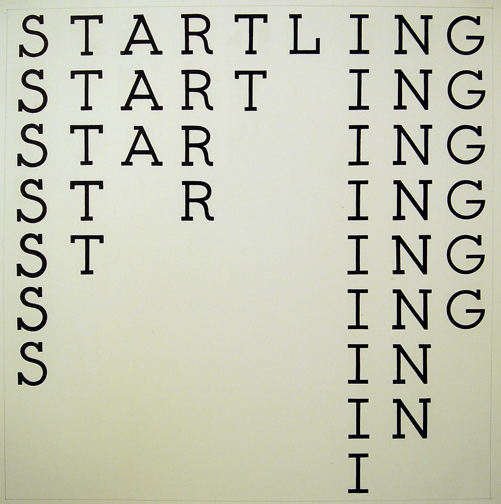Translators always need to be aware of the nature of the message they’re translating. This may seem obvious, but different kinds of statements are aiming for different relationships to their audience. For instance, we usually think of clarity as a value in writing, and translators will even “clean up” the language a bit to make it more understandable. However, if the writer’s intention is quite different, this can pose a problem.
A while ago I did an interesting project for a well-known American artist who incorporates text into her work. For a show in France, her words had been translated into French, and I was asked to back-translate them into English to check the translation. Back-translation can be problematic, because there are a variety of “right” ways to translate something, so just because the back translation doesn’t match the original English does not by itself indicate that anything is wrong. The studio manager agreed to let me use the originals instead to assess the accuracy of the translation. There were a number of problems. The translator had often normalized the artist’s unusual statements in French, rendering the language more ordinary. Sob was translated as pleurer, which means to cry (and not sangloter, which corresponds to sob). The phrase savor kindness was translated as apprécier la bonté, which simply means to appreciate kindness, whereas savor is an unusual word to use with an abstract noun because it evokes the sense of taste; a better translation is savourer la bonté. Discussing all these issues, we were able to adjust the French translation in a way that maintained the obscurity and mystery of the original.
I got to thinking of all this because of another artist who uses language, Christopher Wool, whose show at the Guggenheim is closing today. The stenciled words in Wool’s paintings are hard to decipher because of the way in which he arranges them. “THE HAR / DER YOU / LOOK / THE HAR / DER YOU / LOOK” is one example. After making your way through the odd line breaks, the conclusion that you’re waiting for never arrives (we expect the second half of the sentence to be different, along the lines of, “the bigger they are, the harder they fall”). Or, possibly, as Barry Schwabsky writes in the Nation, you can get a conclusion by interpreting the second half of the sentence differently: in his reading, the painting means something like, “If you’re vigilant, if you’re really attentive, you’ll come across as a tough guy.”
Another iconic Wool piece is “TR / BL.” Today this reminds us of the language of texting, but Wool made the painting in 1989. Since these are paintings, and not conceptual art, they aren’t likely to be a subject for translation. But just for the sake of posing the question, how would one translate this painting into French? You need a word that can be legible by its consonants alone, so if we try to use ennuis (which is a good general choice for trouble in French), it’s going to look like this: NNS. Message lost. There’s also the possibility of keeping TRBL, for trouble (but, although it’s a cognate, in French the word often indicates a mental or emotional confusion, so you lose the sense of an outside force or problem). The best choice would probably be problème — PRBLM. It’s got five letters instead of four, so it’s not as neat, but I think it’s readable in the same way and reflects the concept nicely.
Image: Tauba Auerbach, “Subtraction (Startling)” (2007). Courtesy Jack Hanley Gallery (San Francisco).

